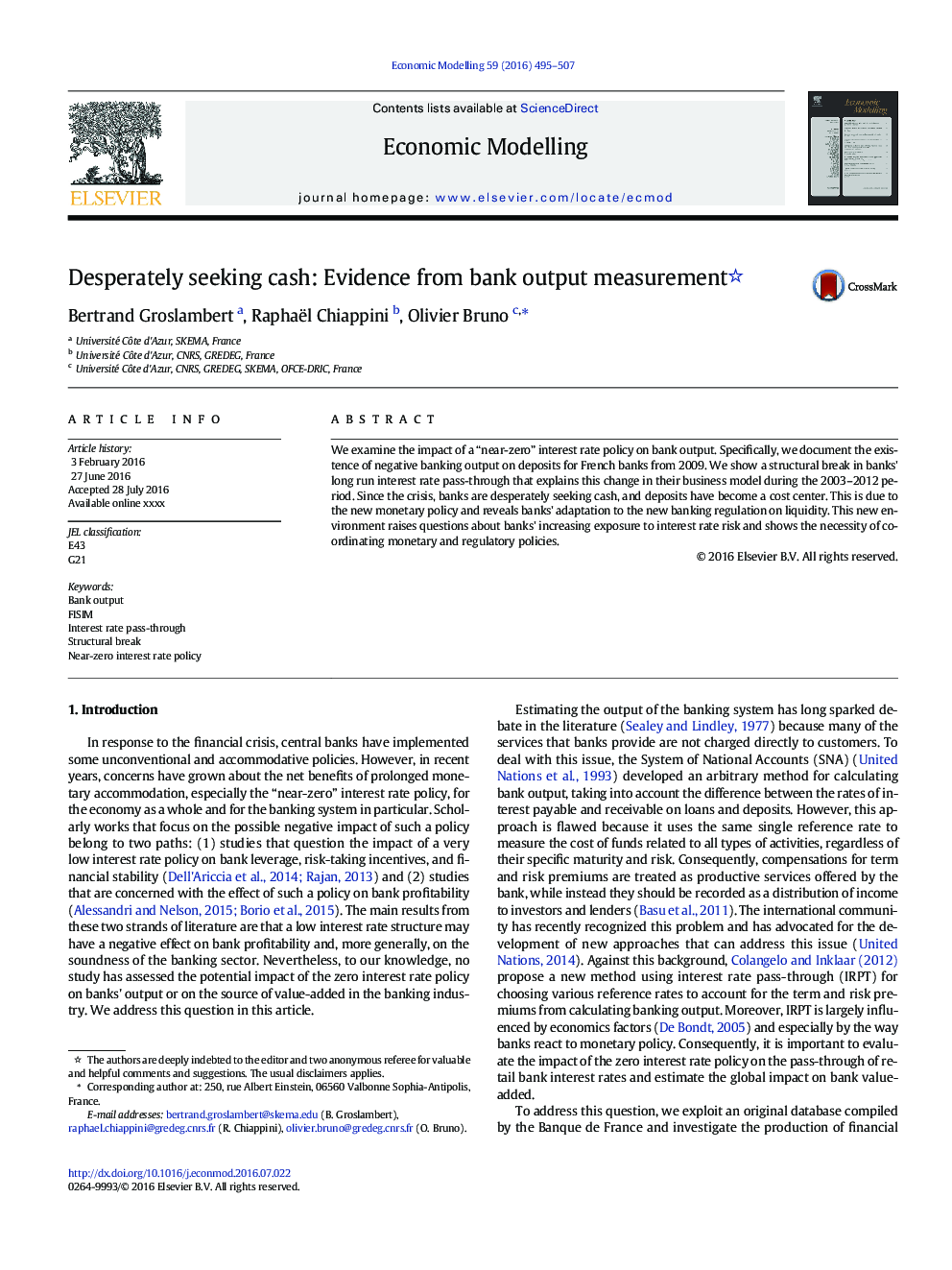| Article ID | Journal | Published Year | Pages | File Type |
|---|---|---|---|---|
| 5053312 | Economic Modelling | 2016 | 13 Pages |
Abstract
We examine the impact of a “near-zero” interest rate policy on bank output. Specifically, we document the existence of negative banking output on deposits for French banks from 2009. We show a structural break in banks' long run interest rate pass-through that explains this change in their business model during the 2003-2012 period. Since the crisis, banks are desperately seeking cash, and deposits have become a cost center. This is due to the new monetary policy and reveals banks' adaptation to the new banking regulation on liquidity. This new environment raises questions about banks' increasing exposure to interest rate risk and shows the necessity of coordinating monetary and regulatory policies.
Related Topics
Social Sciences and Humanities
Economics, Econometrics and Finance
Economics and Econometrics
Authors
Bertrand Groslambert, Raphaël Chiappini, Olivier Bruno,
